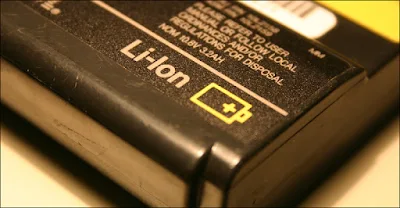How do you calibrate a laptop battery? And what is the benefit of that?

No matter how well you take care of your laptop, after a while the battery deteriorates and loses its ability to store energy efficiently, thus reducing the overall battery life, which results in incorrect estimates of the percentage of power remaining .
Although it's not as bad as it may seem, incorrect estimates can cause your device to shut down suddenly. For example, the battery indicator shows that you have 15% power left. But in reality, the battery power is completely drained.
The only solution if you are experiencing similar issues or seeing unrealistic estimates is to calibrate your laptop battery . It is a very simple procedure and does not require deep technical knowledge. All you have to do is charge the battery, discharge it to zero and charge it again.
This does not cause any harm to the battery, nor does it have any effect on its health - the purpose is to reset the battery's built-in controller so that the operating system is able to know how much power is left and produce accurate and realistic estimates based on that. Here's everything you need to know about how to do this.
First of all, keep in mind that this procedure can be applied to anything that has a rechargeable battery; that is, a laptop battery can be calibrated, as can a smartphone or tablet, regardless of the operating system installed.
You can calibrate your Windows 10 laptop battery just like you would on Windows 7, Windows 8.1, or even Windows XP , since we don't rely on third-party software to do it.
By the way, don't believe any apps that tell you they'll somehow extend or "calibrate" your battery life. They're fake and could actually make things worse. All you need for a laptop battery is the device itself, a charger, and a few hours of your day.
Should I calibrate my laptop battery frequently?

There is no set rule as to how often you should calibrate your battery. You can do it whenever you notice any abnormalities in your laptop, such as sudden shutdowns, or once every two or three months. Especially if you follow the recommendations of not charging the battery to 100% and then waiting until it is completely drained before plugging in the charger.
These practices may extend the life of your battery yes… but they also require regular calibration. Another thing you need to know about battery calibration for laptops is that this procedure will not improve the performance of your device if it is very old and has other hardware-related issues.
As we mentioned in the introduction, the purpose is to make sure the controller is reporting the correct amount of power. But if your computer can barely last an hour without a charger, you may want to consider replacing the battery or the entire laptop.
How to Calibrate Laptop Battery Correctly

All you need to do at first is connect the charger to the laptop and let it charge for a few hours. Let it charge for an hour or two more even if the battery level has reached 100% to make sure that the battery is fully charged because 100% does not mean that the battery is fully charged, there are wrong estimates as we noticed. Now you should let the battery cool down a bit by leaving the charger connected for another hour.
After an hour, you can disconnect the charger from the laptop and use it normally until the power reaches 0%. Ignore any notifications about the need to connect the charger, we just need to make sure that the battery capacity is completely discharged. But keep in mind that during this period you should not turn off the device under any circumstances, if you do not want to use the computer during this period, leave it on.
You should also not let the device enter Sleep or Hibernation mode or even turn off the screen, the laptop should work normally until the battery is drained. To do this, in Windows 10, go to Settings, then System, then Power & Sleep, then set both Screen and Sleep settings to Never as shown in the image above.

Okay, after the battery is completely drained and the laptop shuts down by itself, leave it for a while and then press the Power button to turn it back on. It will probably boot up to Windows and then shut down again. Keep doing this until you notice that the device is not responding to the power command after pressing the Power button. This confirms that the battery is completely dead.
Now you can connect the charger to the laptop again and then turn on the device and wait until the battery is charged to 100%. Again, you may need to leave the charger connected for another hour or two. After that, disconnect the charger and use the device as you normally would.
